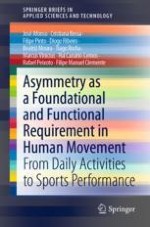2020 | OriginalPaper | Buchkapitel
2. Foundations of Asymmetry
verfasst von : José Afonso, Cristiana Bessa, Filipe Pinto, Diogo Ribeiro, Beatriz Moura, Tiago Rocha, Marcus Vinícius, Rui Canário-Lemos, Rafael Peixoto, Filipe Manuel Clemente
Erschienen in: Asymmetry as a Foundational and Functional Requirement in Human Movement
Verlag: Springer Singapore
Aktivieren Sie unsere intelligente Suche, um passende Fachinhalte oder Patente zu finden.
Wählen Sie Textabschnitte aus um mit Künstlicher Intelligenz passenden Patente zu finden. powered by
Markieren Sie Textabschnitte, um KI-gestützt weitere passende Inhalte zu finden. powered by
